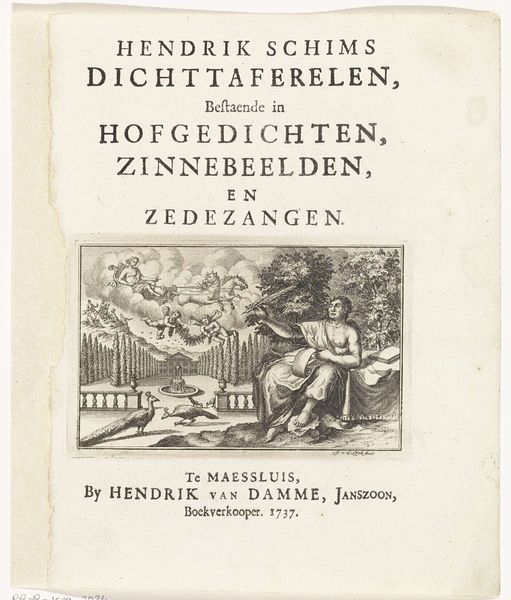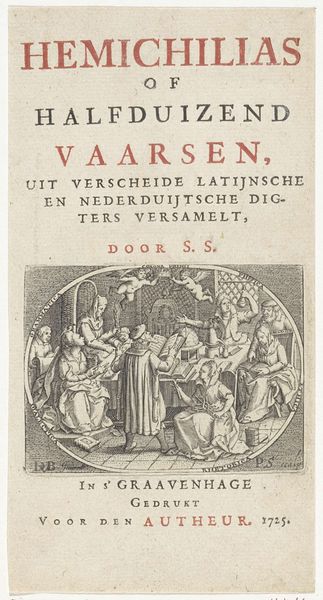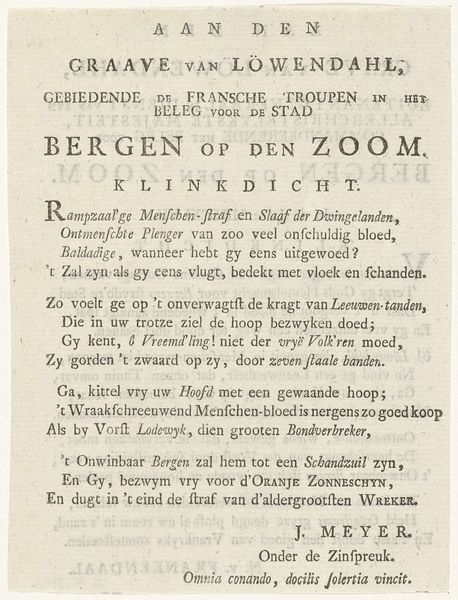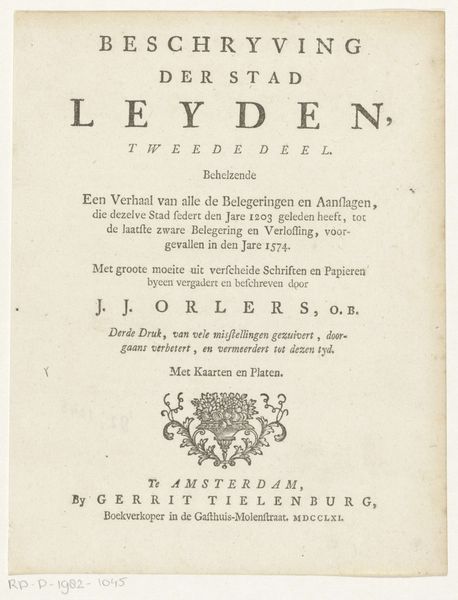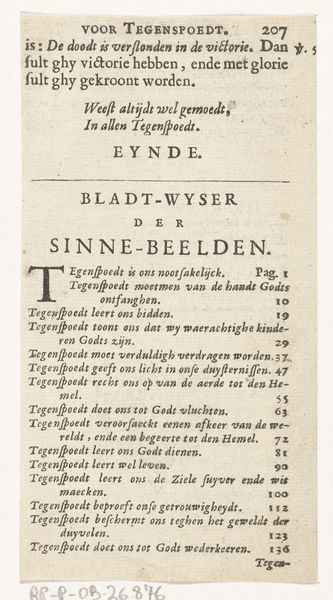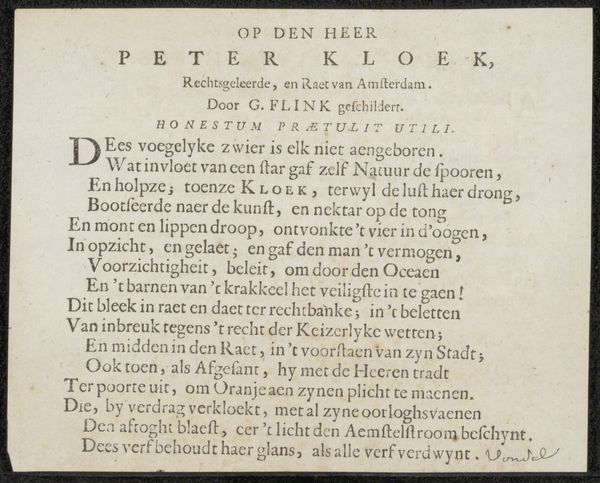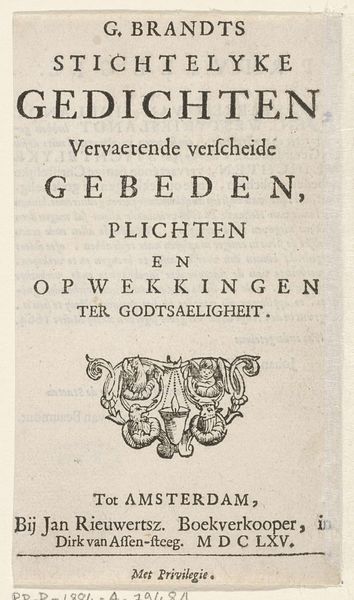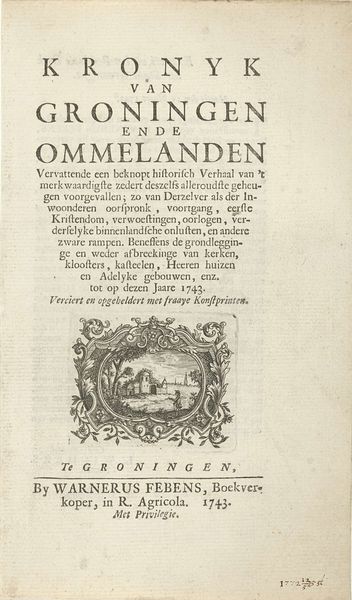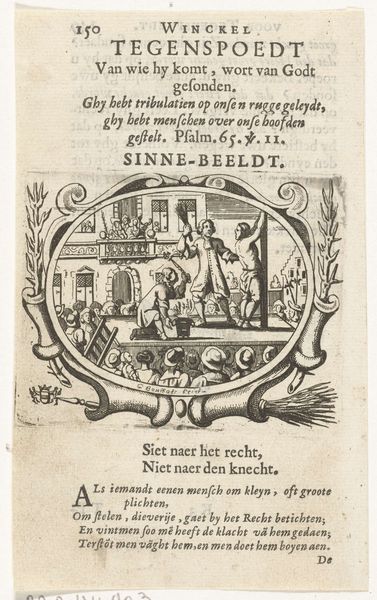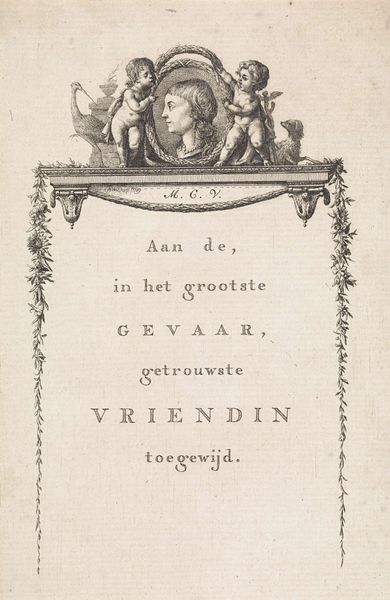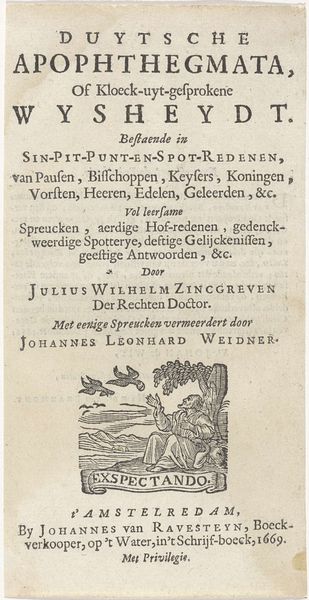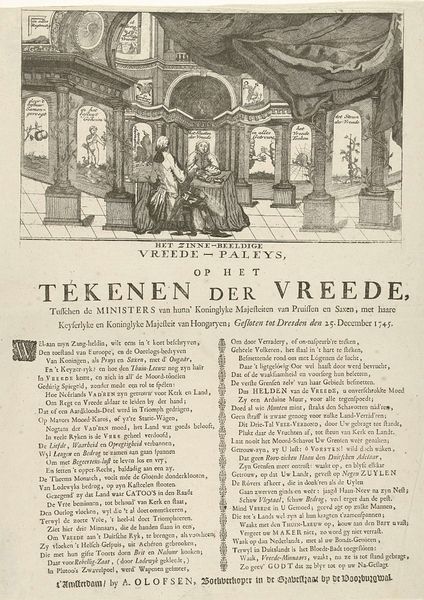
print, engraving
#
allegory
#
hand-lettering
#
narrative-art
#
baroque
# print
#
hand drawn type
#
hand lettering
#
figuration
#
hand-drawn typeface
#
line
#
pen work
#
history-painting
#
engraving
Dimensions: height 250 mm, width 136 mm
Copyright: Rijks Museum: Open Domain
This print, made by Jan de Ridder in 1720, visualizes the resurrection of the dead. Its power lies in the contrast between the delicate lines of the figures and the bold typography. The printmaking process itself—etching—is crucial to understanding its impact. Acid is used to bite lines into a metal plate, which is then inked and pressed onto paper. This allows for fine detail, seen in the shading of the bodies, yet is reproducible. Consider how this affects the image's meaning. De Ridder was not just creating a unique artwork, but producing images that could be distributed widely. The economical and efficient nature of printmaking chimes with the themes of judgement and salvation, promising redemption for all. In this way, the very material and process of the print becomes part of its message, democratizing a scene of judgement and making it accessible to a wider audience, moving beyond the traditional art world.
Comments
No comments
Be the first to comment and join the conversation on the ultimate creative platform.
